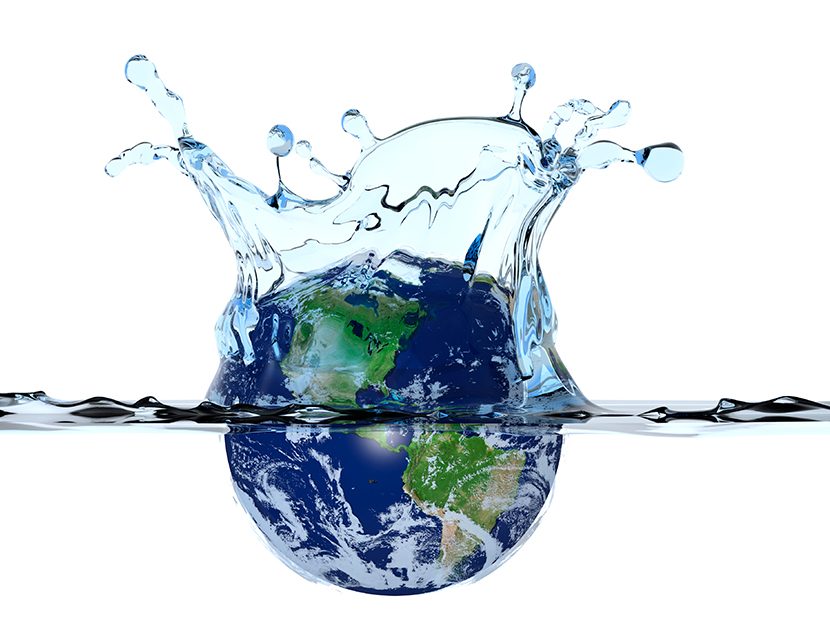World's Water Problems
Would installing modern plumbing in every house in the world be a good use of money?

We have the technology available today to transport clean water to every person on Earth. Would installing modern plumbing in every house in the world be a good use of money? How would you know? I recently listened to a Freakonomics podcast titled “Fixing the World, Bang-for-the-Buck Edition.”They talked about the economics of different world-improving causes. Essentially, if you gave a fixed amount of money to every charity on Earth, some would use it more effectively than others. How do you know which ones are which?
The UN had an international team of people put together a list of top priorities for saving the world in 2014. They came up with 169; that number is a little too big for a list of top priorities. A group of economists from the Copenhagen Consensus Center (CCC) took a hard look at the list and ranked priorities from phenomenal to poor, based only on the value of a dollar to reach as many people as possible. The group aims to set the feel-good aspects of philanthropy aside and look at how effectively they actually can do-good.
The CCC filtered the UN list down and came up with 13 phenomenal top priorities and nine poor priorities. The rest were good, fair, or undetermined. The items rated poor are still worthy causes, just not as cost effective. They explain, “Just think: if we could prioritize a goal that saves 10 lives for every $250,000 spent, over another goal that saves one life for the same amount, we could do much more good over the next 15 years!”
How did clean water causes do in their ranking? The causes on the list were all rated fair or good, except for one. “By 2030, expand international cooperation and capacity-building support to developing countries in water and sanitation related activities and programs [sic], including water harvesting, desalination, water efficiency, wastewater treatment, recycling and reuse technologies” ranked phenomenal.
Some of the other water initiatives scored lower. Getting clean drinking water to every house in a city costs way more than establishing clean community wells. Essentially, your dollar goes further to build basic community plumbing than to put a working faucet and toilet in every home.
Another factor to consider is the implementation of a good idea. If you put together a water delivery system in some parts of the world, an elephant may come knock it over while trying to get a drink. Now you have an expensive, broken water machine and a bunch of elephants looking for more water in your town. Not good.
The Millennium Challenge Corp. detailed the steps it had to take to avoid large mammal damage. In Namibia and Burkina Faso, the group incorporated the water needs of wild animals; elephants and hippopotamuses in the area that had the potential to cause major damage to the project’s water infrastructure. This was done through placement of elephant-only watering holes away from the project, planting hippopotamus-friendly grasses away from infrastructure, and creating natural barriers with trees to protect the areas. In Mongolia and Mozambique, some newly installed water points provided separate valves for human and animal use, lowering the risk of contaminating the drinking water supply. Clean water initiatives are more complex than hooking up a water fountain.
An invention named Slingshot could play a part in cleaning up the world’s drinking water. It is a machine that distills dirty water powered by a Stirling Engine. It is really cool. Entrepreneur Dean Kamen is the father of this invention. Kamen is famous for inventing the Segway. The Segway is a machine for those who want to occupy extra sidewalk space and use electricity to basically just walk. However, Kamen’s other passion projects are really helpful. His lesser-known inventions include stair climbing wheel chairs and water purifiers to help people in need.
Kamen has been all over the public relations circuit showing off the Slingshot: He turned brown sludge into a clear glass of water on the Colbert Report TV program, he did a TED Talk on the topic, he sat down with presidents and major donor groups, he struck up some sort of partnership with Coca Cola, and there is even a 2014 documentary about him on Netflix.
Has Slingshot solved the international water crisis? The initial Slingshot was very expensive. According to a CNN interview with Kamen, the early Slingshot models cost hundreds of thousands of dollars. Kamen hoped to get the price down to around $2,000 per unit. That was in 2009. It is frustratingly hard to find current sales quantities or pricing information on the Slingshot. A 2015 interview with a Kamen collaborator put the price at $30,000-$40,000 per unit.
According to this math, the Slingshot would probably need some serious reworking to impress the CCC economists. This shouldn’t dismay Slingshot enthusiasts, including Kamen. It just means there is still work to be done. For the time being, it probably makes more financial sense to provide good drinking water for lots of people, instead of great Slingshot water for a few.
In researching this article, the one thing that is certain is that solving the world’s biggest problems is a frustrating prospect. Some cost-effective concepts weren’t implemented well and may have done more damage than good. Some expensive concepts got more attention than they probably deserved.
The New Republic published an article called, “Stop Trying to Save the World.” The title is provocative and the article goes through a handful of examples of misunderstandings or unforeseen reactions to good charity intentions. One popular invention called the PlayPump was backed by lots of A-list celebrities. Kids spinning a little merry-go-round power the pump. Unfortunately, they had major issues with the rollouts and ongoing maintenance. In some areas, they just wanted their old hand pumps back.
The New Republic article concludes, “So international development sucks, right? I’ve just spent thousands of words telling you all the ways the incentives of donors, recipients, and NGOs contradict each other. Why not just scrap it altogether? Because I don’t think that’s the conclusion these examples suggest. I think they suggest something much less dramatic: It’s not that development is broken, it’s that our expectations of it are.”
The problem with the Slingshot may be our expectation that it will fix everything for everyone. In the social media era, we may be confusing good ideas with good execution of a plan. One million “likes” and a couple good photo ops may or may not have anything to do with the effectiveness of the cause. On the other hand, some incredible invention that could help save the world may be getting dusty in a garage somewhere without a PR effort. The world is a complicated place.
Maybe a nerdy group of economists should determine which charities you should support, not Bono or Jay-Z. We shouldn’t be discouraged by certain good intentions gone wrong. The most important things to do in the world are rarely the easiest. The only thing more discouraging than an invention that flops is an inventor who is afraid of flopping.
Whatever your cause is, vetting it out with a site like charitynavigator.org is a good idea.





